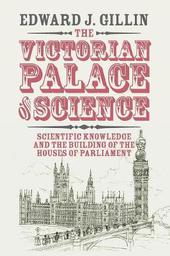
|
The Victorian Palace of Science: Scientific Knowledge and the Building of the Houses of Parliament
Paperback / softback
Main Details
| Title |
The Victorian Palace of Science: Scientific Knowledge and the Building of the Houses of Parliament
|
| Authors and Contributors |
By (author) Edward J. Gillin
|
| Series | Science in History |
|---|
| Physical Properties |
| Format:Paperback / softback | | Pages:341 | | Dimensions(mm): Height 229,Width 151 |
|
| Category/Genre | British and Irish History
History of science
History of engineering and technology |
|---|
| ISBN/Barcode |
9781108411615
|
| Classifications | Dewey:725.110942132 |
|---|
| Audience | | Professional & Vocational | |
|---|
| Illustrations |
Worked examples or Exercises; 39 Halftones, black and white
|
|
Publishing Details |
| Publisher |
Cambridge University Press
|
| Imprint |
Cambridge University Press
|
| Publication Date |
13 June 2019 |
| Publication Country |
United Kingdom
|
Description
The Palace of Westminster, home to Britain's Houses of Parliament, is one of the most studied buildings in the world. What is less well known is that while Parliament was primarily a political building, when built between 1834 and 1860, it was also a place of scientific activity. The construction of Britain's legislature presents an extraordinary story in which politicians and officials laboured to make their new Parliament the most radical, modern building of its time by using the very latest scientific knowledge. Experimentalists employed the House of Commons as a chemistry laboratory, geologists argued over the Palace's stone, natural philosophers hung meat around the building to measure air purity, and mathematicians schemed to make Parliament the first public space where every room would have electrically-controlled time. Through such dramatic projects, Edward J. Gillin redefines our understanding of the Palace of Westminster and explores the politically troublesome character of Victorian science.
Author Biography
Edward J. Gillin completed a D.Phil. at the University of Oxford in 2015 and is now a Research Fellow at the University of Cambridge. He specialises in British science, technology, architecture, and politics in the nineteenth century, with his current work focusing on the role of sound in the production of Victorian scientific knowledge. Previous works cover topics such as the Cunard Steamship Company, early-twentieth-century political protest, and Isambard Kingdom Brunel's Great Eastern steamship. He received the 2015 Society of Architectural Historians of Great Britain's Hawksmoor Medal, and in 2016 was awarded the Usher Prize from the Society for the History of Technology.
Reviews'This is in an important intervention in architectural history, and a successful challenge to histories of the Palace of Westminster, and architectural histories more generally, that are preoccupied with aesthetics and style. It is also a significant contribution to the history of science, not just because of the new story it tells, but in the way it expands on the work of Joe Bord to show how contested notions of science permeated governing approaches during the age of reform.' Martin Spychal, Parliamentary History
|